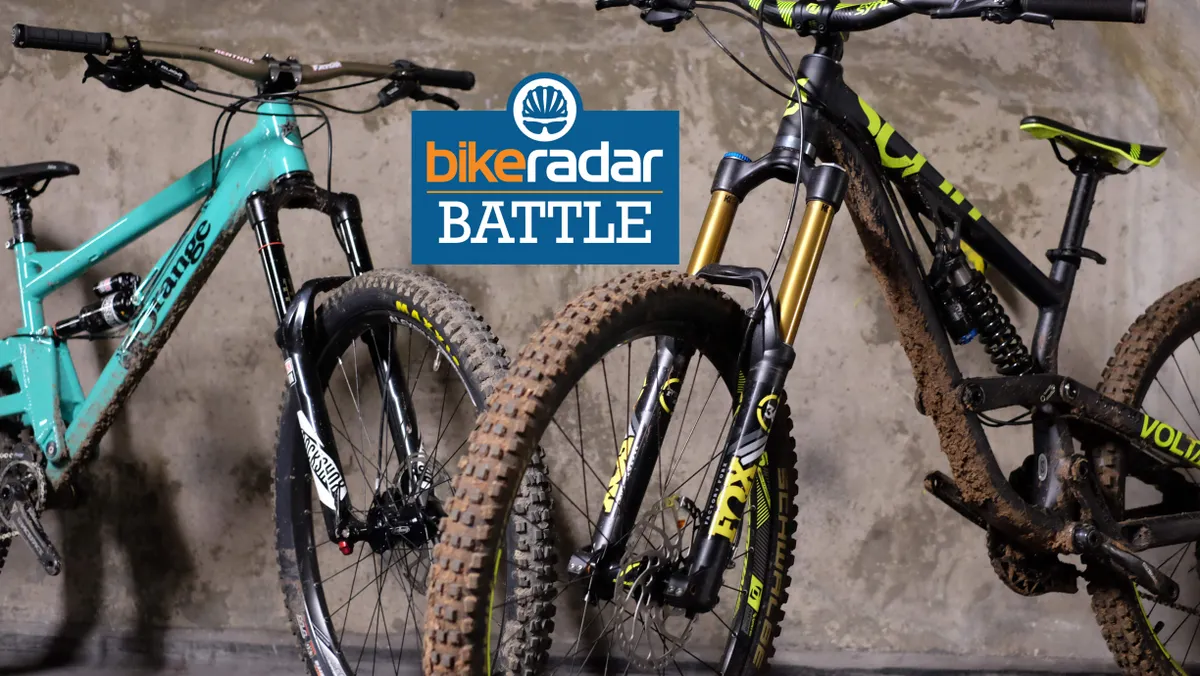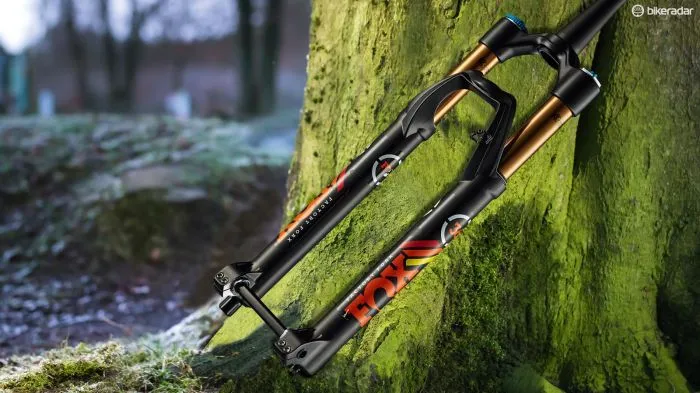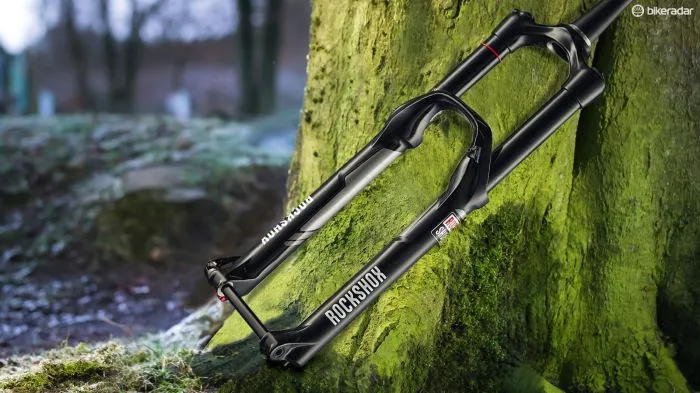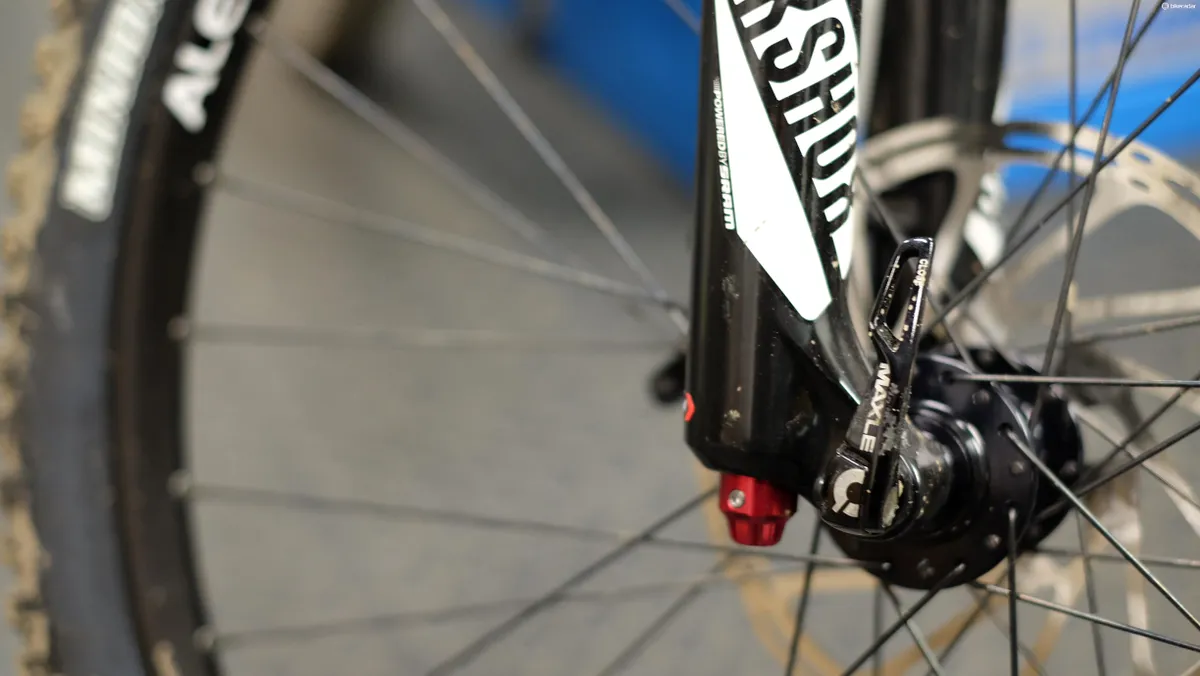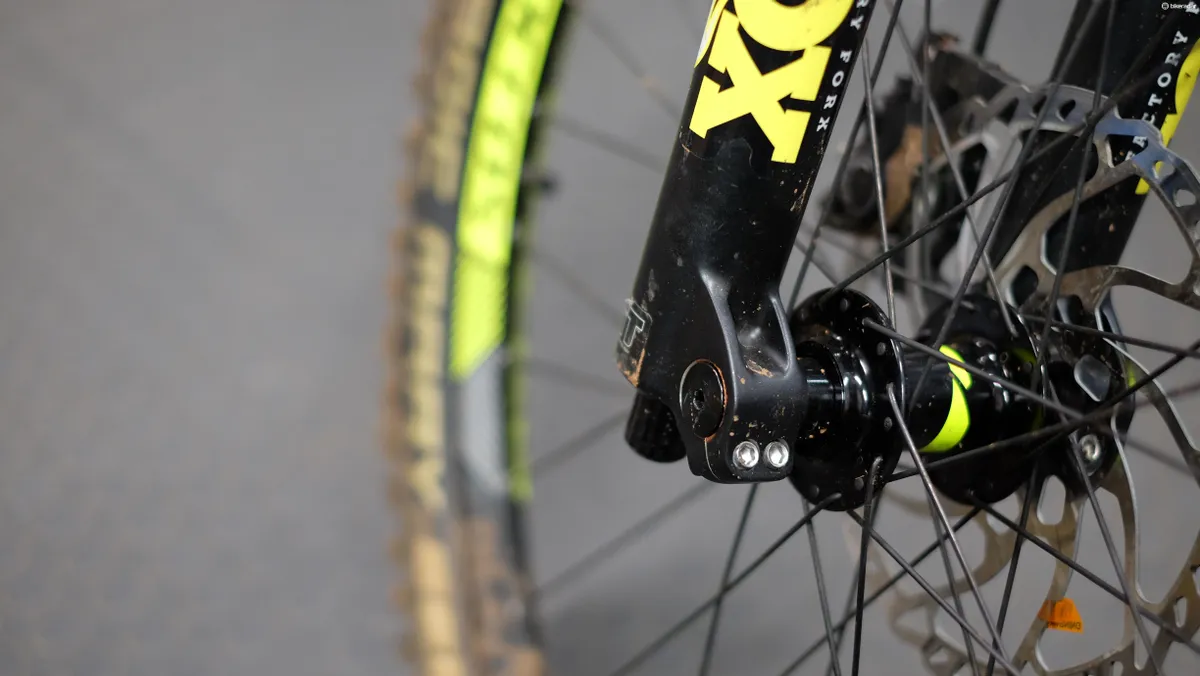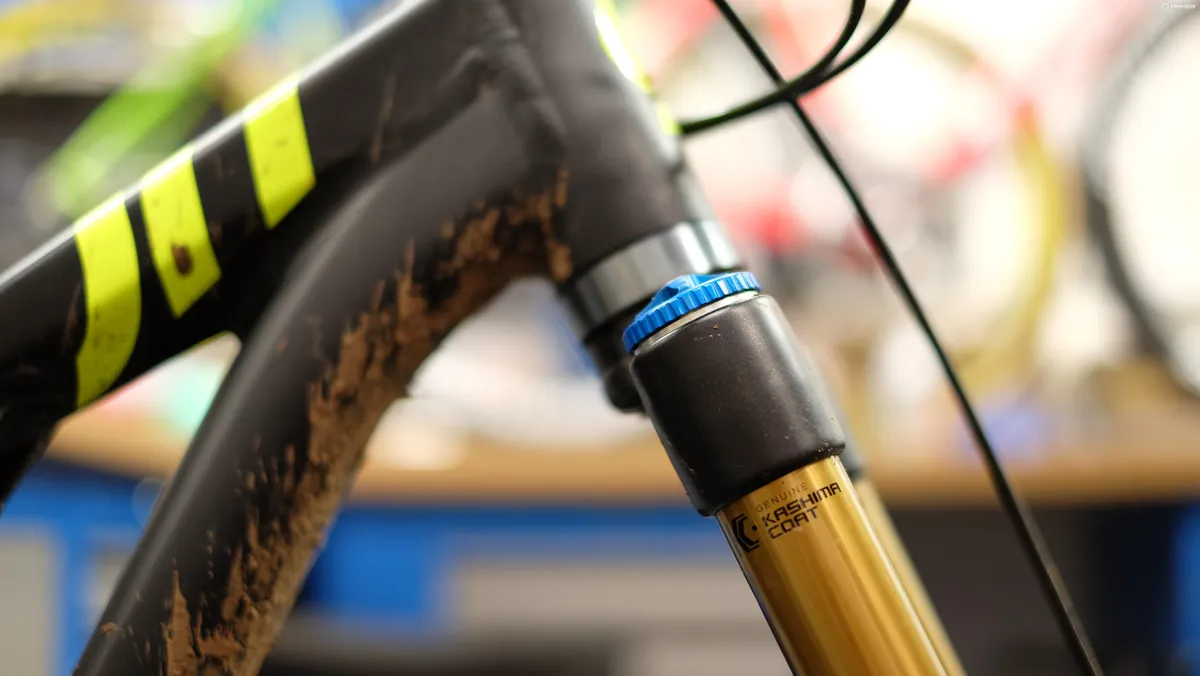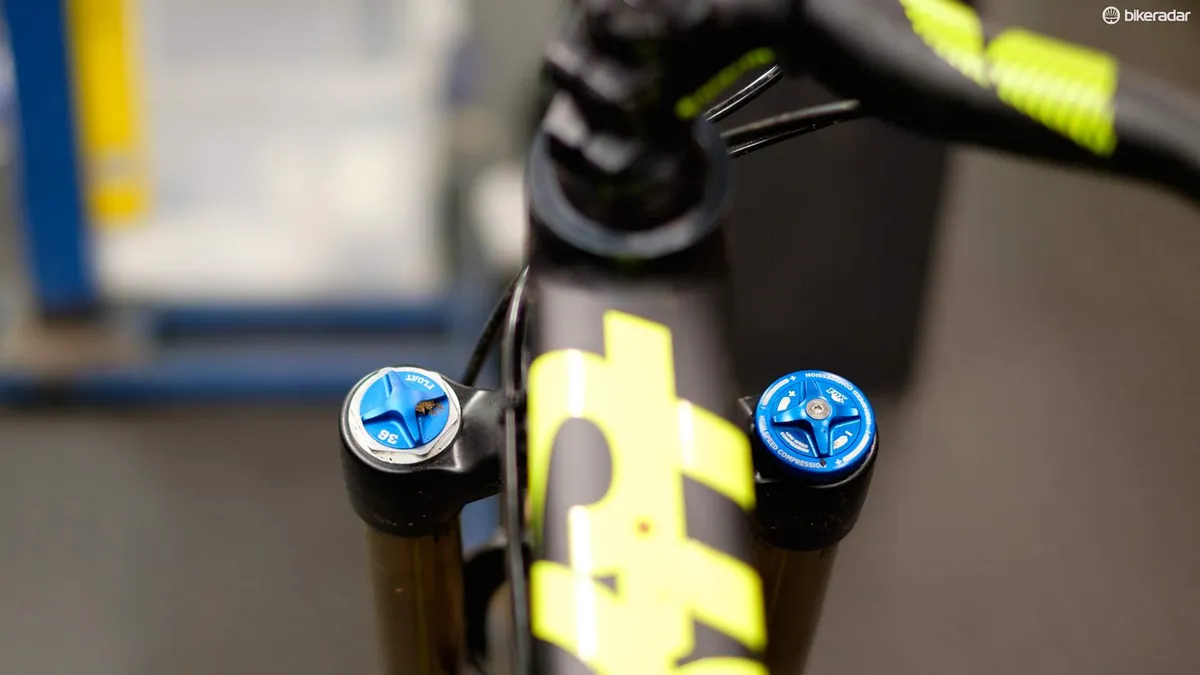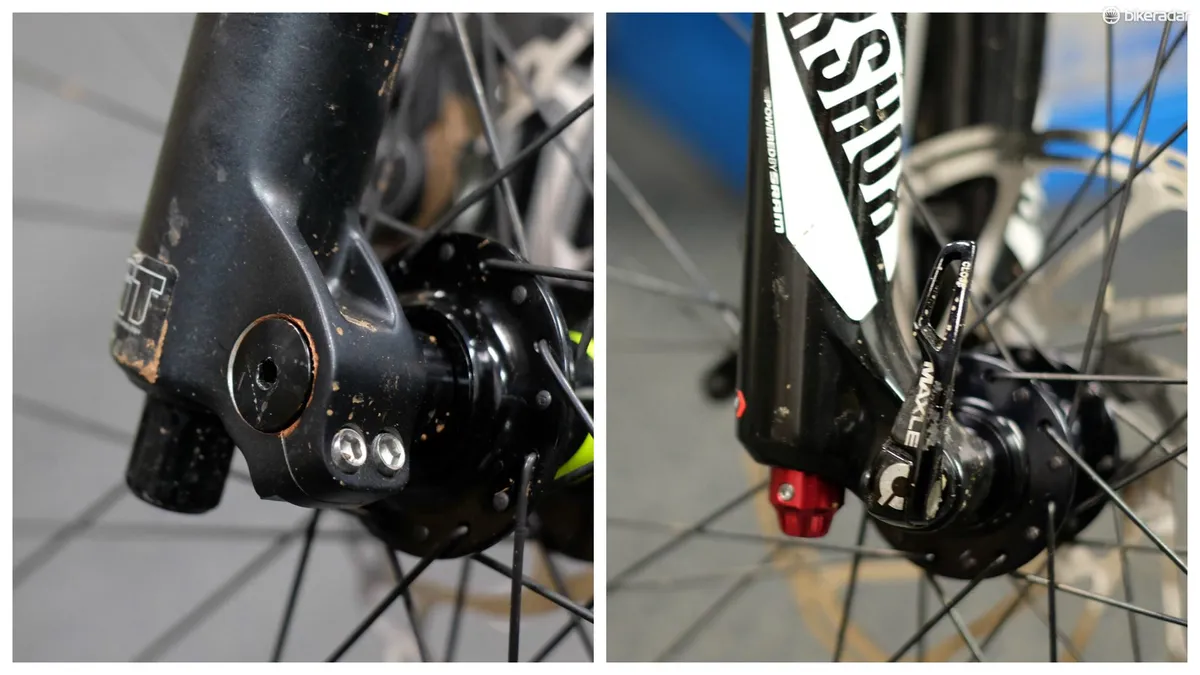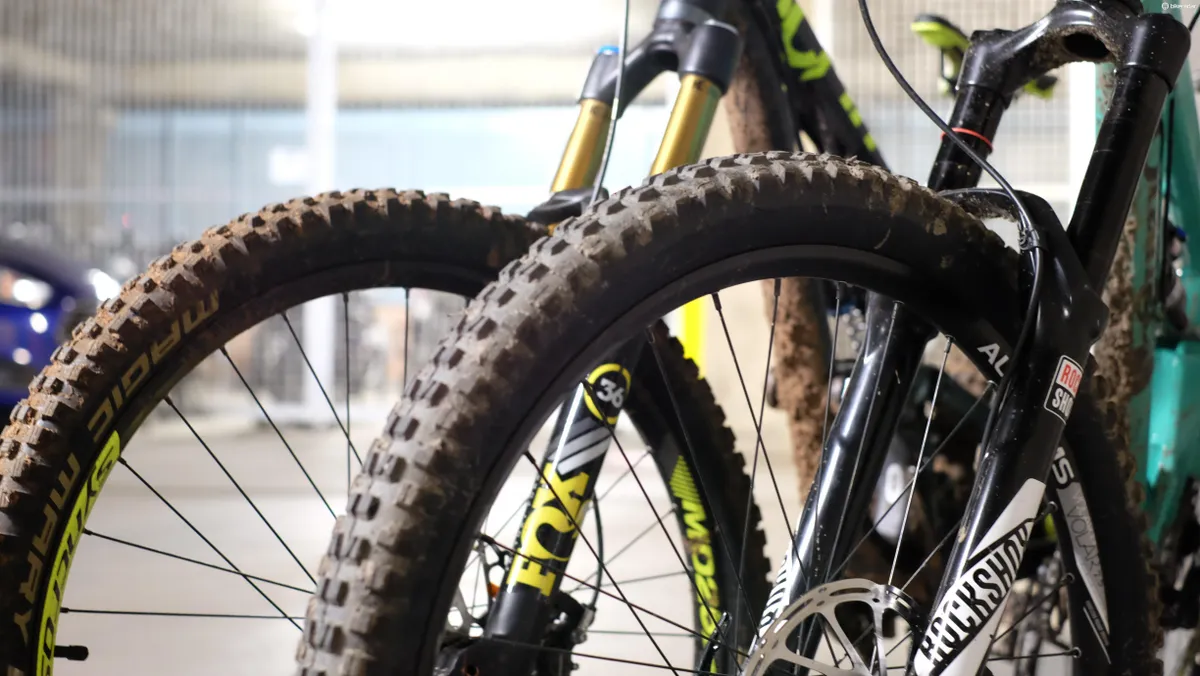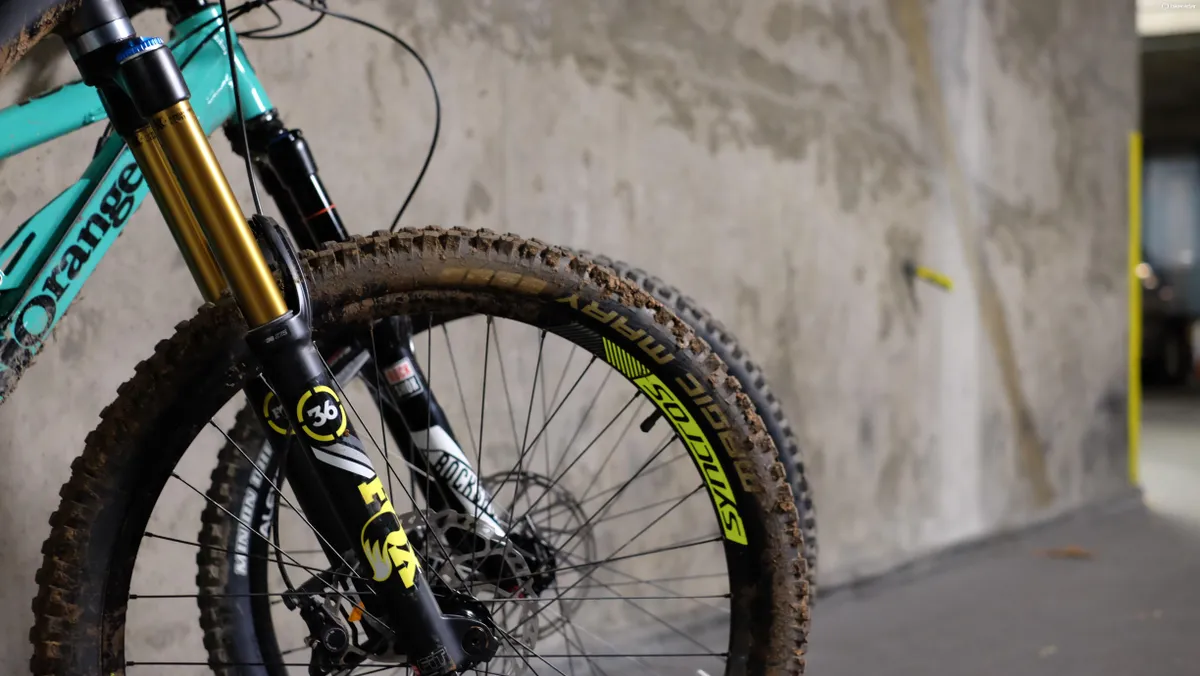When it comes to picking a fork for tough trail use or enduro racing action, you’re spoilt for choice, as there are a huge number of hard-hitting but lightweight 160mm units out there. However, there are two forks that stand head and shoulders above the rest when it comes to top-level performance and control.
In the red corner we’ve got the fork that gave its rivals a sound kicking when it was released, the mighty Pike from RockShox. In the blue corner we’ve got the no-holds barred riposte from Fox; the golden-legged Fox 36 with its incredibly adjustable RC2 damper.
Related: Best trail/enduro forks
Both are airsprung, both use sealed cartridge dampers and both are made for taking on the roughest terrain this side of a downhill track. It’s an epic enduro grudge match – so which one offers the most bang for your buck?
Off the shelf
While the Pike is completely murdered-out with black legs and lowers, the Fox has altogether more gaudy legs as a result of its low-friction Kashima coating. This helps retain lubricating oil in microscopic pores and is also extremely wear-resistant. The black anodising on the Pike doesn’t claim to offer any such benefits but long-term experience has told us it’s still hugely durable. It also benefits from having sag markers on the legs, making setup much easier.
The Pike’s Charger damper is the RCT3 model, which gets a selection of open pedal and locked modes, with finely adjustable low speed compression damping in the open setting. It uses RockShox' Rapid Recovery system, which has adjustable rebound damping in the initial part of the stroke but uses a fixed, faster rate from deeper in the travel, enabling the fork to recover quickly from big hits.
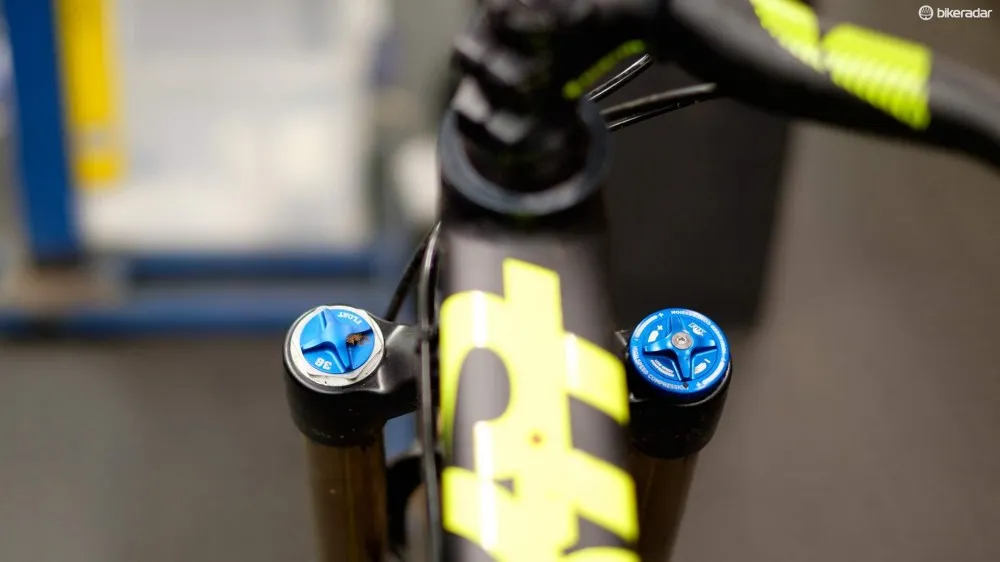
No pedal or lockout modes, but the right leg of the 36 does allow independent adjustment of high- and low-speed compression damping
The Fox doesn’t have the choice of pedal or lockout modes, but does allow independent adjustment of high- and low-speed compression damping as well as rebound from the RC2 cartridge. While it requires a greater degree of knowledge to get right, if you know how you can set the fork up perfectly for almost any kind of track.
It’s possible to alter how progressive both forks are by adding volume spacers, a simple case of removing the top cap. You can also adjust the travel internally from 160mm down to 110mm in 10mm increments on the Fox 36 by setting the air shaft length and adding negative air spacers. On the Pike it’s possible to reduce the travel down to 120mm from 160mm, but you need to replace the entire air shaft with a shorter, travel-specific item.
The Fox uses 36mm legs compared with the 35mm items of the Pike, a stiffness advantage that's boosted by the fact it features a thru-axle secured by a pair of pinch bolts either side, and can take a 20mm hub as well as the more common 15mm with an adaptor. The 15mm Maxle on the Pike is less stiff, but allows a much faster, tool-free wheel change.
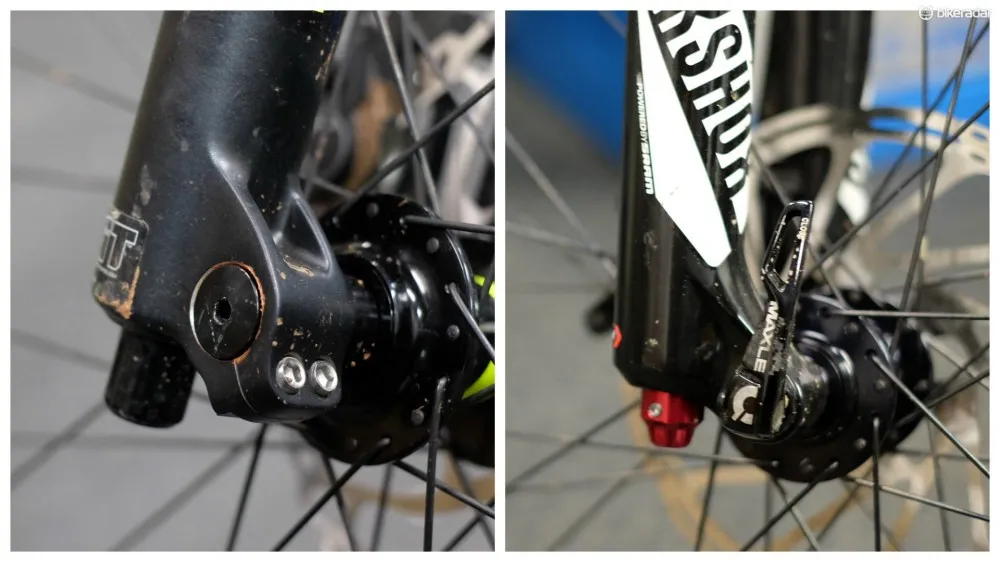
Unlike the bolted axle of the 36(left), the Pike's Maxle (right) makes for quick, tool-free wheel changes
For racers the extra stiffness of the Fox will be appealing as a puncture means a lost stage, negating the need for an easily removable wheel. Trail riders will prefer the simpler, faff-free approach of the Pike’s easy to use Maxle. In the 650b wheel size there a 100g penalty for the 36’s chunkier chassis over the 1860g weight of the Pike too.
Winner
- It’s a draw. The 36 has a racing bias with huge tuning potential while the Pike offers a simpler initial setup and more user friendly features. The Fox is best suited to enduro racers while the Pike favours the trail rider.
In your wallet
At $1,050 / £899 / AU$1,599, the Fox 36 is more expensive than the Pike, which retails at $1,005 / £820 / AU$1,550 – though the latter is easy to find at a considerably reduced price in shops, something that can’t be said for the 36. The more complex damper and hi-tech coating on the 36 goes some way to justifying the retail price difference, however.
When it comes to service intervals, Fox recommends a full service every year or 125 hours of riding, whichever comes first. RockShox advocates a lower leg service for the Pike every 50 hours of riding, which is a simple job for the home mechanic. The more involved full service is recommended after 100 hours of riding, though the fork does come with the spare parts needed for this in the box, namely a set of wiper seals and foam lubricating rings.
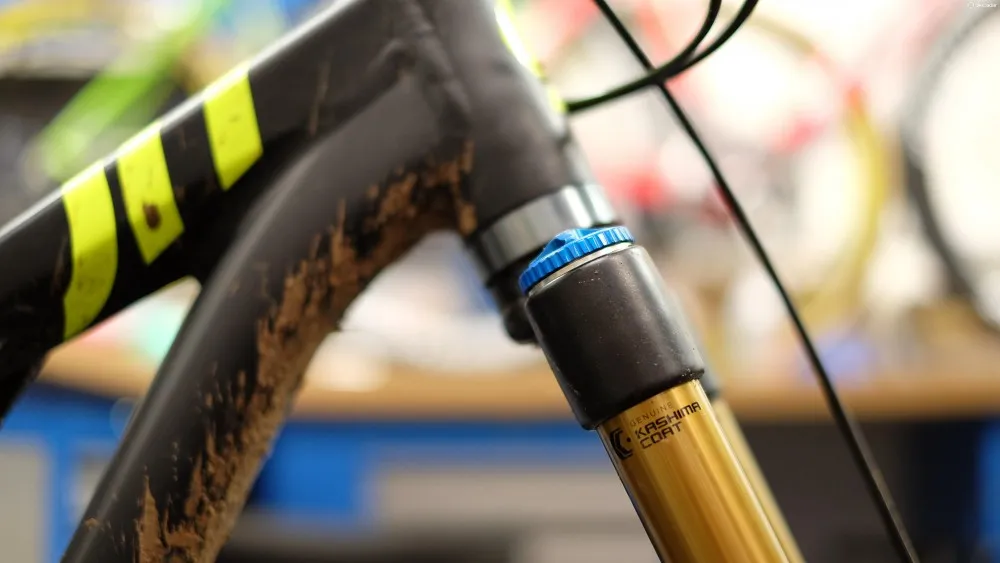
Both forks feel well made, with adjusters that give very positive clicks
At BikeRadar we’ve tested many, many forks for long periods of time, and both the Pike and 36 have proved durable and reliable. In the UK, the service and support backup given by Fox importer Mojo is second to none. RockShox servicing is dealt with by local shops that pass the fork on to the SRAM Service Centre for any work that is needed, though there are a number of aftermarket specialists too.
Winner
- While the Fox fork offers a staggering amount of technology, it’s hard to argue with the fact that the Pike can be found for significantly less money, which means it takes the win.
On the trail
There’s no doubting that both these forks are capable of taking on some serious terrain, but they have markedly different ride feels. The Pike comes across more active, with a spring and pop that encourages a playful riding style.
The simple setup procedure means it’s easy to get the fork working at close to full potential with little fiddling and fettling, though harder riders will definitely benefit from adding some volume spacers from the off. While it moves around a bit more when pedalling, this can easily be tamed with a twist of the compression lever into ‘Pedal’ or even locked out for long, smooth climbs, something that lends itself to all-round trail riding.
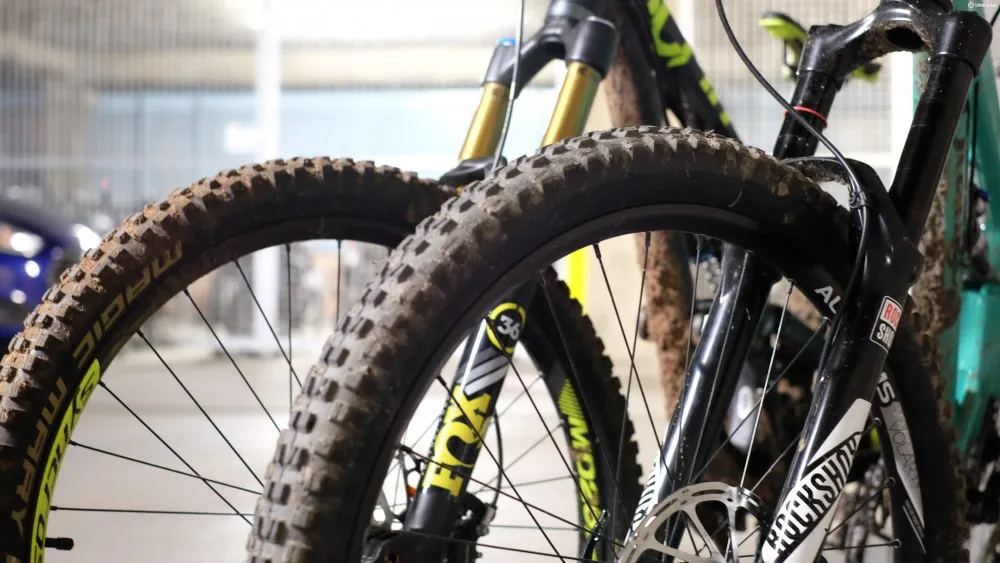
The 36 requires more time and effort to set up but for some it's definitely worth it
Conversely, the Fox 36 has a much more muted feeling. It works superbly to iron out the bumps and trail chatter, but while the Pike lets you know about the work it’s doing, the Fox just gets on with it. That’s not to say there’s no feedback; it’s just that it tells your hands what’s going on without needing to make a big deal about it. It’s a sensation that the fork isn’t stressed, something that encourages you to push harder and harder.
There’s no question that the 36 requires more time and a more methodical approach to setup, but if you’re willing to make the effort, it’ll more than reward you when the going gets rough. Right at the ragged limit the Fox feels more composed; something helped by the razor-sharp chassis that allows you to cut almost any line you desire across the trail. With careful tweaking of the low speed compression damping, it’s possibly to mute pedalling bob and for a big fork it’s remarkably composed even when sprinting flat out or hauling up road sections in the saddle, despite the lack of lockout.
Winner
- While some of this call comes down to how you like a fork to feel, when the going gets really rough the extra adjustability and unshakeable control of the Fox means it takes a narrow lead in this category.
Verdict
While it might seem like a cop-out, the result of this battle has to be a draw. Why’s that? It’s because while these are both 160mm, air-sprung forks for the rufty-tufty end of the riding spectrum, they’re actually best suited to very different riders. The Fox 36 is a technical powerhouse that requires time, effort and knowledge to get it working at it’s best. It suits the serious enduro racer or hardcore trail rider that’s counting tenths on every descent – and wants every descent to be as wild as possible.
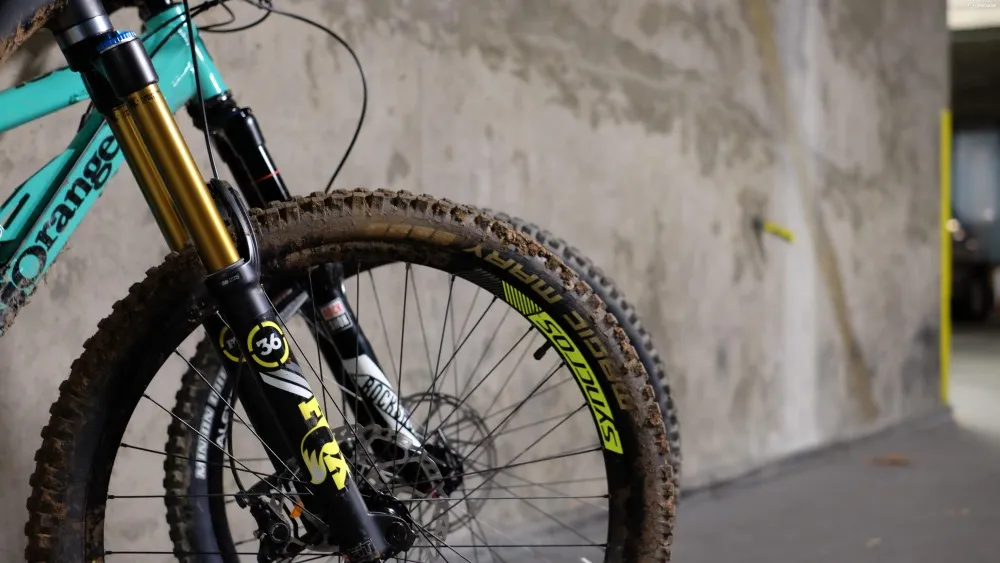
These forks are best suited to very different riders
The bolt-up dropouts are just a sign of this focus. It might take more time to change a wheel if you flat, but for a racer this is immaterial – if you flat then you’ve lost, so why not have a stiffer and more precise fork in the first place? If you’re a dyed-in-the-wool techhead and tweaker, it’s likely to be something you’re willing to pay more for.
The Pike on the other hand is definitely the more rounded trail fork. Thanks to the three-position compression adjustment, it can turn its hand to everything from burly cross-country to black-run battering. It might lack the all out damping control and adjustability of the Fox, but its performance is much more accessible thanks to simpler controls and some smart setup touches. If you want to set and forget, then it’s the fork you should go for.
Fox 36
RockShox Pike
Winner
Price
$1,050 / £899 / AU$1,599
$1,005 / £820 / AU$1,550
RockShox
Weight
1980g
1860g
RockShox
Adjustment
More tuneable damper with independent high/low speed compression adjustment
Low-speed compression damping, three-position lockout, rebound, travel with new parts, volume spacers
Fox
Chassis stiffness
36mm legs with the option of a 20mm axle as well as 15mm. Both are bolt-up
35mm legs, 15mm Maxle
Fox
Ease of use/setup
Needs decent technical knowledge and dedicated setup time, bolt up axle
Simple damping controls, quick release Maxle axle
RockShox
Recommended service intervals
Full service every 125 hours of riding/1 year
Lower leg service every 50 hours, full service every 100 hours
Fox
Ride feel
More taut, with greater outright downhill performance
More plush and active feel, much easier to adjust on the fly for climbs and so on
Draw
Array